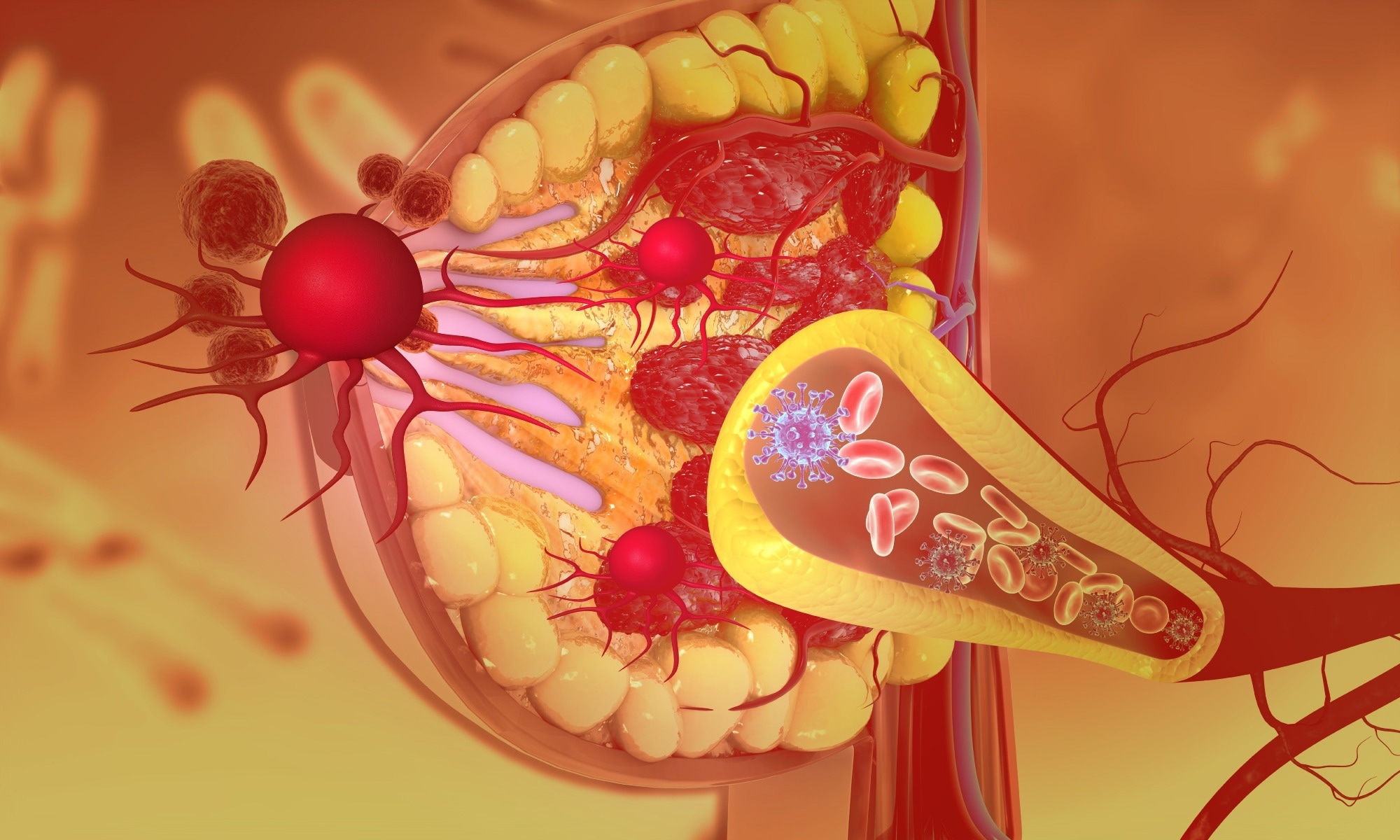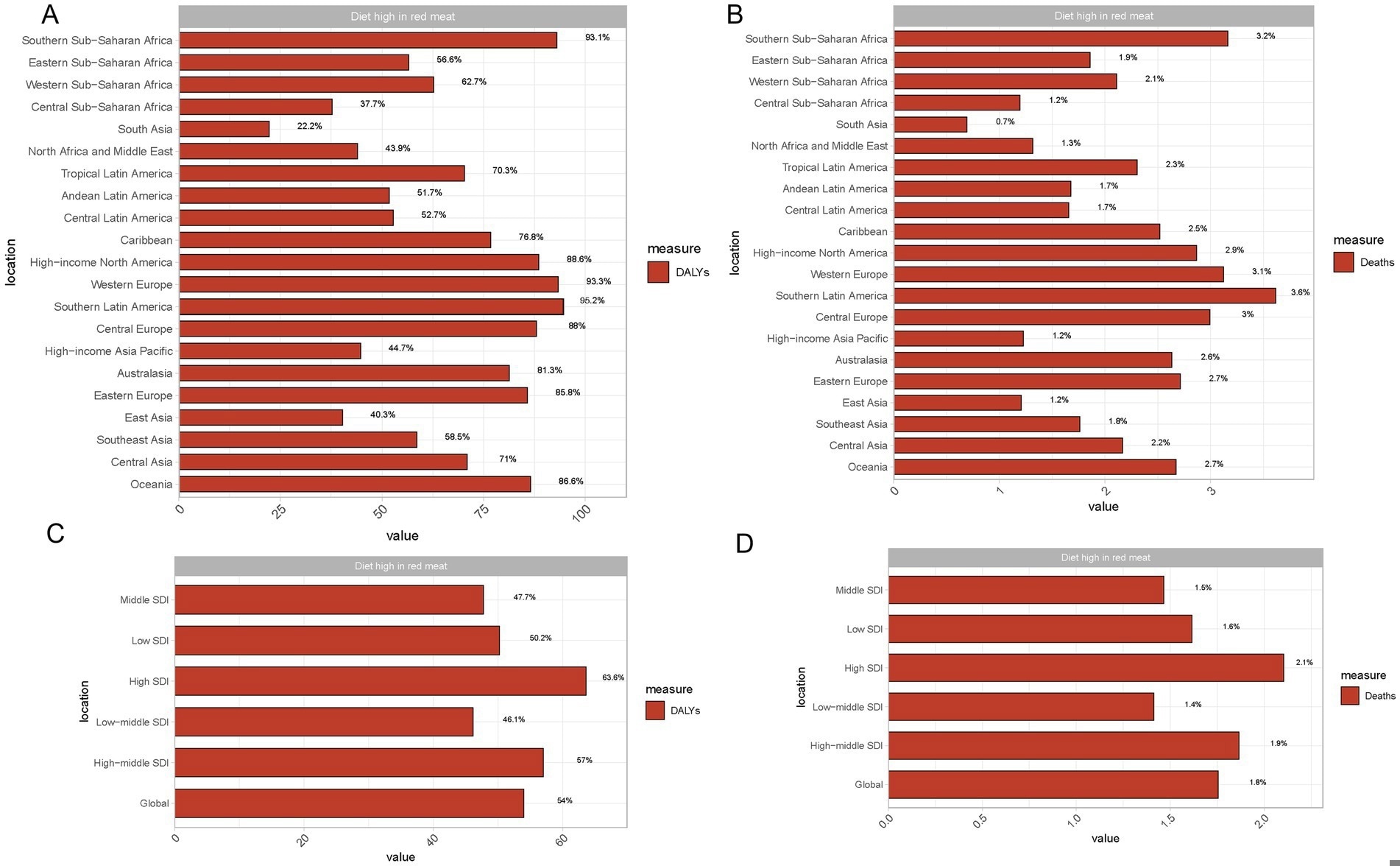As breast cancer deaths linked to red meat surge in younger women, especially in developing nations, research explains why changing what’s on your plate could save lives.
 Study: Global, regional, and national analyses of the burden among adult women of breast cancer attributable to diet high in red meat from 1990 to 2021: longitudinal observational study. Image Credit: Explode / Shutterstock
Study: Global, regional, and national analyses of the burden among adult women of breast cancer attributable to diet high in red meat from 1990 to 2021: longitudinal observational study. Image Credit: Explode / Shutterstock
In a recent study in the journal Frontiers in Public Health, researchers investigated temporal, geographic, and socio-demographic trends and risk associations in female breast cancer worldwide. Specifically, the study leveraged more than 30 years of data (1990–2021) from the Global Burden of Disease (GBD) 2021 study to quantify the impacts of high unprocessed red meat consumption on regional, national, and global breast cancer–associated mortality and disability-adjusted life years (DALYs).
Study findings
Study findings indicated significant increases in unprocessed red meat-associated model-estimated numbers of mortality (from 44,492 in 1990 to 79,956 in 2021, a 79.7% rise) and model-estimated DALYs (from 1,379,721 to 2,407,092, a 74.5% rise) between 1990 and 2021, with low- and middle socio-demographic index (SDI) regions experiencing particularly pronounced impacts, although the patterns varied. For instance, age-standardized rates (ASR) of mortality and DALYs declined in high SDI regions, while low-middle SDI regions saw significant increases in these age-standardized rates. Low SDI regions, despite lower absolute numbers of deaths and DALYs, experienced sharp relative increases in these absolute figures. These findings detail the ongoing increases in global breast cancer burden among adult women (ages 25–45 yrs), highlighting the demerits of healthcare disparities and Western dietary patterns and emphasizing the need for targeted healthcare and nutritional interventions to mitigate breast cancer in the future.
Background
Global meat consumption has been rising at unprecedented rates, almost doubling since 1961, with developing nations (e.g., China) demonstrating the highest increases. Unfortunately, a growing body of literature suggests that high red meat consumption (RMC) has a detrimental impact on human health, particularly concerning cancer incidence and progression.
Consequently, the International Agency for Research on Cancer has classified unprocessed red meat as “probably carcinogenic to humans” (Group 2A carcinogen, 2015). Unfortunately, studies explicitly investigating the associations between RMC and subsequent cancer risk have produced inconsistent and confounding results, triggering a global debate on the safety of RMC. Notably, a comprehensive analysis of the burden of breast cancer in adult women attributable to high unprocessed red meat consumption, using the latest GBD 2021 data and examining temporal trends across various SDI levels, had not been undertaken until this study.
Breast cancer is a leading global cause of female morbidity and mortality, accounting for 670,000 deaths in 2022 alone. While public health interventions have gradually curbed mortality rates in developed nations, predictive models suggest that the overall global burden of breast cancer will exacerbate in the coming years, emphasizing the need for improved medical understanding of factors (particularly modifiable) contributing to disease risk.
 Impact of red meat consumption on DALYs and deaths across regions and SDI levels. (A) Proportion of breast cancer DALYs (Disability-Adjusted Life Years) is attributed to diets high in red meat across different global regions. (B) Proportion of breast cancer deaths attributed to diets high in red meat across different global regions. (C) Proportion of breast cancer DALYs attributed to diets high in red meat across various Sociodemographic Index (SDI) levels. (D) Proportion of breast cancer deaths attributed to diets high in red meat across various Sociodemographic Index (SDI) levels.
Impact of red meat consumption on DALYs and deaths across regions and SDI levels. (A) Proportion of breast cancer DALYs (Disability-Adjusted Life Years) is attributed to diets high in red meat across different global regions. (B) Proportion of breast cancer deaths attributed to diets high in red meat across different global regions. (C) Proportion of breast cancer DALYs attributed to diets high in red meat across various Sociodemographic Index (SDI) levels. (D) Proportion of breast cancer deaths attributed to diets high in red meat across various Sociodemographic Index (SDI) levels.
About the study
The present study aims to estimate the impacts of high unprocessed RMC on breast cancer-associated adult female deaths, age-standardized mortality rates (ASMR), disability-adjusted life years (DALYs), and age-standardized DALY rates (ASDR) across regional, national, and global scales. It aims to inform women, clinicians, and public health agencies about behavioral and dietary modifications (actionable strategies) that can help mitigate breast cancer risk, ultimately leading to a safer and healthier tomorrow. The study methodology and analyses adhere to the Guidelines for Accurate and Transparent Health Estimates Reporting (GATHER) guidelines.
Study data were obtained from the Global Burden of Disease (GBD) 2021 study, a comprehensive database that combines records from 204 countries between 1990 and 2021, tracking disease burden over time. Specifically, researchers extracted data on gender (female), age (25–45 years), region, socio-demographic index (SDI), exposure (high unprocessed RMC defined as >23 grams/day), and outcomes (deaths and DALYs; the study did not focus on breast cancer incidence or prevalence as primary reported outcomes). They used these to compute ASMR, DALYs, and ASDR. In the GBD framework, DALYs are calculated as the sum of years of life lost (YLL) and years lived with disability (YLD).
Statistical models (linear regressions) were used to evaluate temporal trends in unprocessed RMC-associated breast cancer metrics via an ‘estimated annual percentage change (EAPC)’ metric. To ensure the robustness, generalizability, and reproducibility of the results, all models were adjusted for potential confounders (e.g., stratified by age), SDI (low, low-middle, middle, high-middle, and high), and regions (using hierarchical cluster analysis), and were expressed in per 100,000 people metrics.
Study findings
Study findings revealed a stark surge in global unprocessed RMC-associated female breast cancer burden between 1990 and 2021. Breast cancer-related model-estimated numbers of mortality increased from 44,492 to 79,956 (an approximate 79.7% rise), while model-estimated DALYs increased from 1,379,721 to 2,407,092 (an approximate 74.5% rise).
EAPC analyses, however, highlighted that trends in age-standardized rates (ASR) were significantly varied across SDIs and regions. It is important to distinguish between changes in absolute numbers and changes in these age-standardized rates. High SDI regions demonstrated reductions in ASMR (an EAPC of -1.47%) and ASDRs (an EAPC of -1.48%). In contrast, low-middle SDI regions experienced substantial increases in these age-standardized rates (EAPC for ASMR: 1.39%; ASDR: 1.42%). High-middle SDI regions also showed significant increases in the absolute number of deaths and DALYs, though their age-standardized rates (EAPC) declined. Low SDI regions, despite lower absolute numbers of deaths and DALYs, experienced sharp relative increases in these absolute figures. The study also reported a nonlinear, "S"-shaped association between overall ASMR/ASDR and SDI at regional and national levels, with the burden typically peaking in moderate SDI regions.
At the country level, China demonstrated a sharp rise in the absolute number of breast cancer deaths attributed to high unprocessed red meat consumption, from the GBD 2021 study's reported model-estimated 44.98 deaths for China in 1990 to model-estimated 125.86 deaths for China in 2021 (these are absolute model-based estimates specific to China, not rates per 100,000 or regional totals for East Asia), reflecting its substantially increased RMC during the last 30 years. In absolute numbers of deaths in 2021, India reported over 190 deaths. From the perspective of age-standardized DALY rates (ASDR), smaller island nations such as American Samoa (167.25 per 100,000), Nauru (161.33 per 100,000), and Palau (161.32 per 100,000) exhibited especially high breast cancer burdens. In contrast, Western Europe presented declines in ASDR between 1990 and 2021.
Age-stratified risk assessment identified women in the 40–44 years cohort as the most vulnerable, demonstrating increased mortality and DALYs across all investigated regions and SDIs.
Conclusions
The present study provides evidence quantifying the significant and growing population-level burden of breast cancer attributable to high unprocessed red meat consumption, reinforcing its observed association with breast cancer development on a population scale rather than implying direct individual causality. It highlights high-risk populations (SDI and age), regional healthcare disparities, and temporal trends in breast cancer morbidity and mortality, underscoring the urgent need for region-specific tailored dietary interventions to mitigate the projected rise in the disease’s burden. The paper also notes limitations, including data gaps in certain regions and the consideration of only a few behavioral and metabolic risks.
Journal reference:
- Ding, X., Tang, Z., Ma, H., & Jiang, C. (2025). Global, regional, and national analyses of the burden among adult women of breast cancer attributable to a diet high in red meat from 1990 to 2021: longitudinal observational study. Frontiers in Public Health, 13, DOI – 10.3389/fpubh.2025.1580177, https://www.frontiersin.org/journals/public-health/articles/10.3389/fpubh.2025.1580177/full